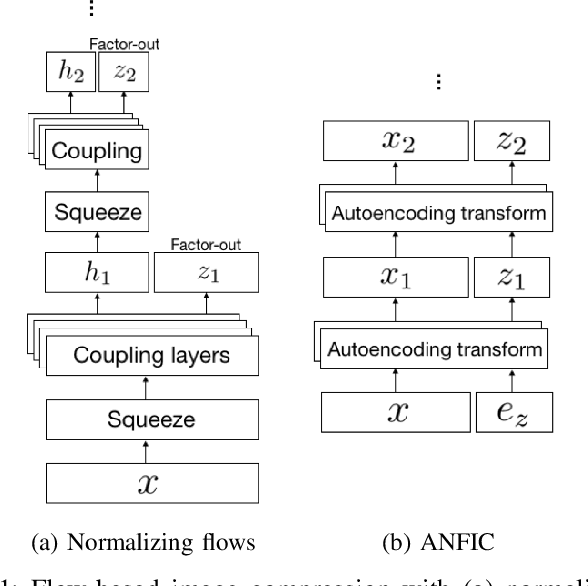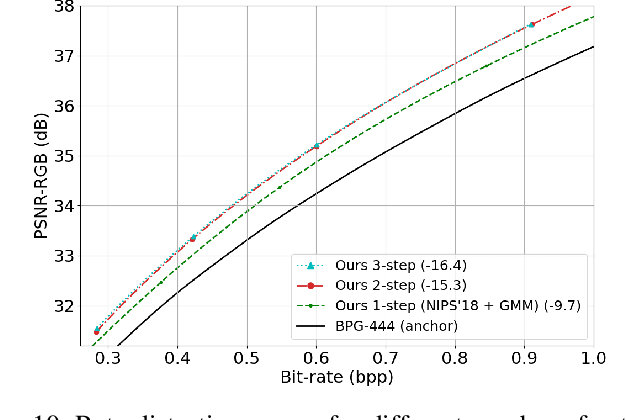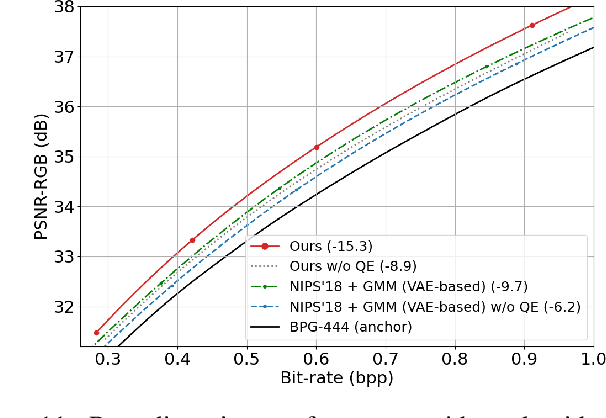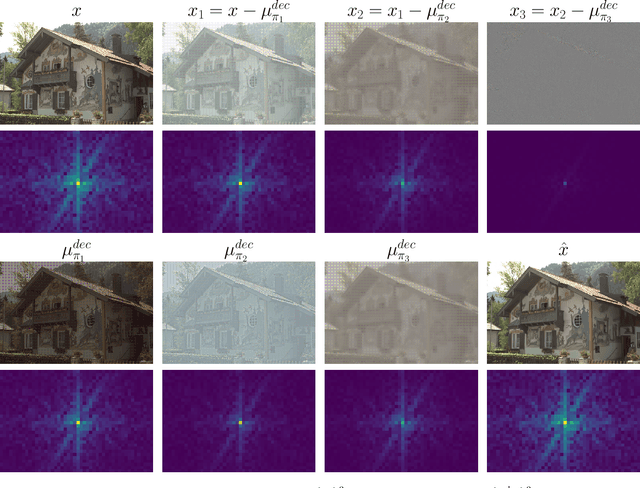Marek Domanski
ANFIC: Image Compression Using Augmented Normalizing Flows
Jul 18, 2021



Abstract:This paper introduces an end-to-end learned image compression system, termed ANFIC, based on Augmented Normalizing Flows (ANF). ANF is a new type of flow model, which stacks multiple variational autoencoders (VAE) for greater model expressiveness. The VAE-based image compression has gone mainstream, showing promising compression performance. Our work presents the first attempt to leverage VAE-based compression in a flow-based framework. ANFIC advances further compression efficiency by stacking and extending hierarchically multiple VAE's. The invertibility of ANF, together with our training strategies, enables ANFIC to support a wide range of quality levels without changing the encoding and decoding networks. Extensive experimental results show that in terms of PSNR-RGB, ANFIC performs comparably to or better than the state-of-the-art learned image compression. Moreover, it performs close to VVC intra coding, from low-rate compression up to nearly-lossless compression. In particular, ANFIC achieves the state-of-the-art performance, when extended with conditional convolution for variable rate compression with a single model.
Depth Estimation using Modified Cost Function for Occlusion Handling
Nov 10, 2017



Abstract:The paper presents a novel approach to occlusion handling problem in depth estimation using three views. A solution based on modification of similarity cost function is proposed. During the depth estimation via optimization algorithms like Graph Cut similarity metric is constantly updated so that only non-occluded fragments in side views are considered. At each iteration of the algorithm non-occluded fragments are detected based on side view virtual depth maps synthesized from the best currently estimated depth map of the center view. Then similarity metric is updated for correspondence search only in non-occluded regions of the side views. The experimental results, conducted on well-known 3D video test sequences, have proved that the depth maps estimated with the proposed approach provide about 1.25 dB virtual view quality improvement in comparison to the virtual view synthesized based on depth maps generated by the state-of-the-art MPEG Depth Estimation Reference Software.
 Add to Chrome
Add to Chrome Add to Firefox
Add to Firefox Add to Edge
Add to Edge